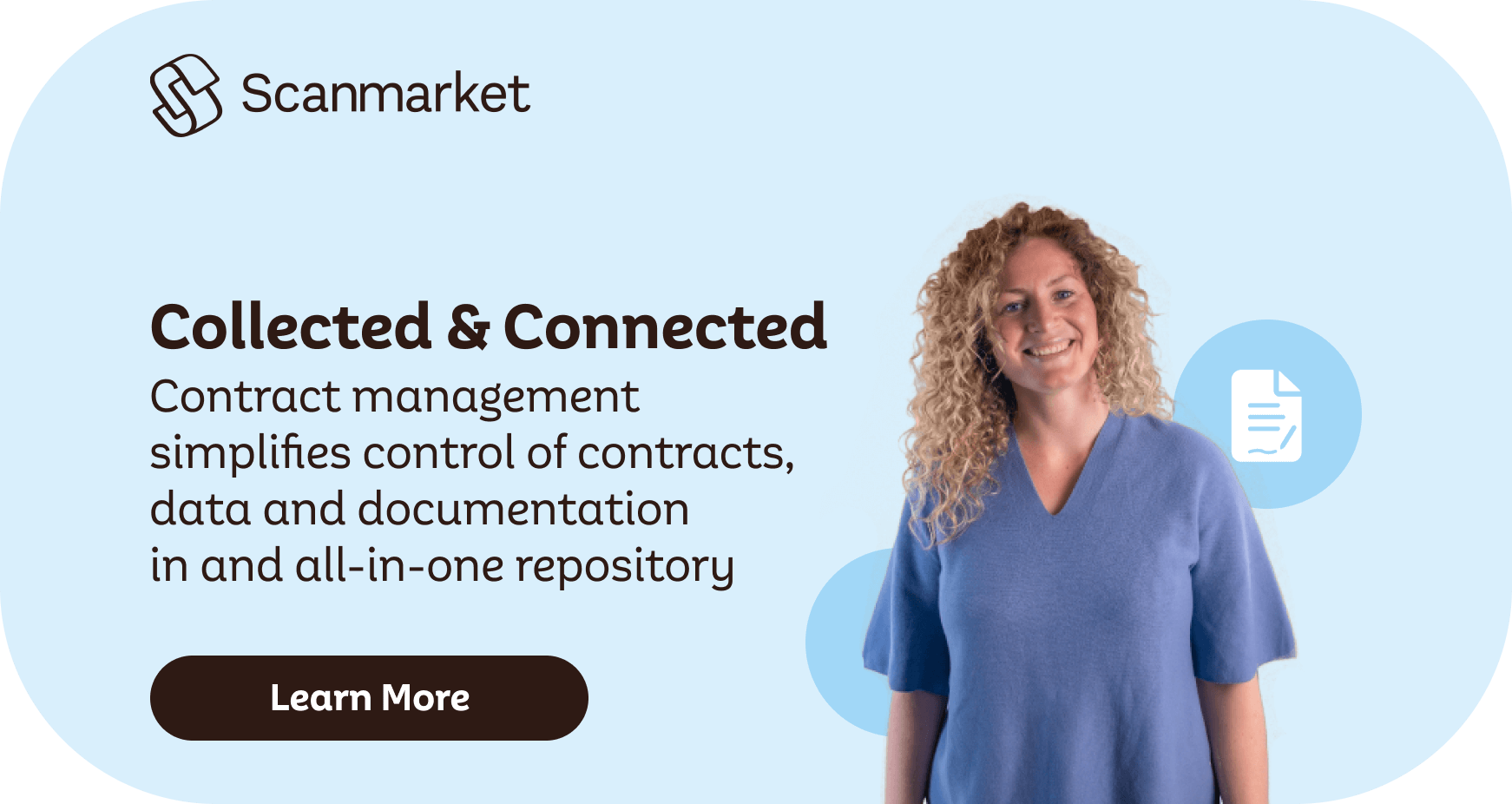The purpose of a contract is the governance of a relationship. Employment contracts govern the relationship between employer and employee; tenancy contracts govern the relationship between landlord and tenant, as well as each party’s relationship with the property; credit contracts govern the relationship between consumer and provider. Every type of contract exists to clearly set out the terms and conditions involved in two parties interacting in an agreed way for a specific purpose.
All contracts are important in business, which is why Contract Management is such a high priority for commercial operations. The contracts relating to procurement, however, are of particular significance, because procurement is about relationships with external individuals, agencies and organizations in the same way that Human Resources is about relationships with internal personnel.
What is procurement?
Procurement is central to business operations because it deals with long-term processes aimed at value creation. It encompasses all activities involved in the sourcing of goods and services, making it a relational system. This is distinct from purchasing, which is a short-term, transactional procedure aimed at cost reduction. In general terms, there are four classifications of procurement:
Indirect Procurement – The acquisition of goods or services that are not directly related to the production of an end product.
Direct Procurement – The acquisition of goods or services that are directly related to the production of an end product.
Goods – The acquisition of physical items or subscriptions that may or may not be directly related to the production of an end product.
Services – The acquisition of people-based services, including contractors and sub-contractors, that may or may not be directly related to the production of an end product.
These classifications can then be combined where necessary, creating definitions such as indirect services procurement, or direct goods procurement, for example. These classifications also provide insight into the complexities of procurement contracts, and the way in which procurement becomes a vital part of supply chain management for any organization. The business must fulfil its own obligations in terms of internal and external compliance, and the proper, well-researched acquisition of appropriate goods and services is an essential part of this process.
The Procurement Contract Cycle
The procurement process in business reflects the concept of the Contract Lifecycle, which is widely accepted as being best practice in Contract Management processes. The Contract Lifecycle is made up of stages, from identification of need, negotiation and Risk Management to performance monitoring and renewal or termination. Like the Contract Lifecycle concept, the procurement contract cycle approaches the collection of procurement tasks as a whole system of connected processes, with each stage flowing seamlessly into the next while being its own distinct responsibility. There are seven steps to the procurement cycle, set within three different stages:
Sourcing
Identification of Need
The first step requires a detailed analysis of the requirement in question. This involves setting out exact technical specifications and characteristics in consultation with departments across the organization.
Request
In the case of procurement, the Request stage is a formal internal submission (sometimes referred to as a requisition order) to the company itself. This serves as notification of the identified need, the timescale in which it is required, and details of quantity and cost. This request must be reviewed and approved for the procurement process to proceed.
Selection
The process of vendor or supplier selection is a complex one because it centers on Risk Management as much as cost management. Potential candidates must be thoroughly assessed and vetted before the business submits a Request For Quote (RFQ). Comprehensive risk assessments are crucial at this stage, in order to reduce the chance of adverse effects on the business caused by problematic or unreliable vendors or suppliers.
Purchasing
Negotiation
The purpose of sending out Requests For Quotes is to ensure best practice in procurement – that is to gather multiple quotes for the identified need before approving one, based upon a variety of considerations. In the acquisition of quotes, it is expected that the business will spend some time negotiating for the preferred terms and costs.
Purchase
Once a quote has been accepted, it must be approved. A purchase order is then created reflecting the terms of the deal negotiated. This should include details of the goods or service being purchased along with scheduling and cost information. The purchase order is then sent to the supplier or vendor.
Payment
Delivery
When delivery of the goods or service is taken, the content should be carefully examined and a thorough quality assurance inspection should be completed. If any errors or damage are identified, this should be raised with the supplier or vendor. If the goods or services meet or exceed the expected standard, then the Accounts Department works to reconcile the purchase order with the delivery paperwork and invoice, and then resolve any issues. Once everything is authenticated and approved, payment is made. This is a key part of the procurement process – not only because it centers on the fulfillment of obligation on the part of both parties, but also because timely resolution of issues and prompt payment helps to build productive commercial relationships as well as helping businesses to avoid penalties.
Management
The final step in the procurement cycle is as straightforward or complex as the specific contract requires it to be. In the case of a one-time acquisition of goods or services, all paperwork relating to the purchase must be maintained and stored as accurate records. This is for the purpose of compliance and auditing as well as being for the purpose of future Risk Management and forecasting. All past contracts and transaction experiences can inform current and future decisions. In the case of ongoing acquisitions of goods or services – of subscriptions, re-orders or regular provision – the accurate recording and maintenance of pertinent information can help to create a strong commercial relationship and avoid issues and disputes during the course of the relationship.
The objective of each stage and step is to create value through the negotiation of favorable agreements, and to protect the business and its revenue through stringent Risk Management and compliance. Approaching procurement as a cycle in this way enables businesses to achieve those objectives using a method that is streamlined and, consequently, highly efficient. Breaking down and categorizing each step clearly means that tasks and responsibilities can be properly assigned, and this increases levels of accountability.
Managing the Procurement Contract Cycle
The advantages of applying the principles and technology of Contract Lifecycle Management to procurement reach beyond the similarities in their process structures. Harnessing this strategy delivers a high ROI (Return On Investment) in terms of cost-effectiveness and the building of increased efficiencies throughout the business. While procurement contracts relate to a specific area of the enterprise, contracts in general intersect with every area of commercial operation. This means that the implementation of Contract Management Software generates quantifiable improvements across multiple departments, including Procurement.
Contract Management Software incorporates a comprehensive range of Third Party Risk Management tools which support the creation of general contracts, and procurement contracts in particular. The browser-based design boasts permission-based access, enabling authorized personnel to log in from any internet-connected location using any web-enabled device. This provides flexibility and agility and ensures that stringent risk assessments and data analysis can be undertaken at any time. A centralized repository allows for careful standardization and the creation of intelligent questionnaires to inform risk assessments. In addition, links to leading external databases, such as LexisNexis, Refinitiv, and Dow Jones, enable businesses to complete thorough background checks on individuals and organizations alike, reducing risk even further. These features combine to deliver powerful risk mitigation capabilities.
Combining the use of cloud technology with Artificial Intelligence, Contract Management Software also helps to generate increased accountability and transparency while maintaining a platform geared toward the ease of collaboration. This is achieved with automatic audit trails and encrypted data transfer protocols. Every point of communication in the procurement cycle is streamlined and made more efficient as a result, leading to shortened process times and less resource wastage. Efficiency is boosted further by the application of AI to workflow processes, ensuring that important milestones in the Contract Lifecycle are dealt with at the right time.













